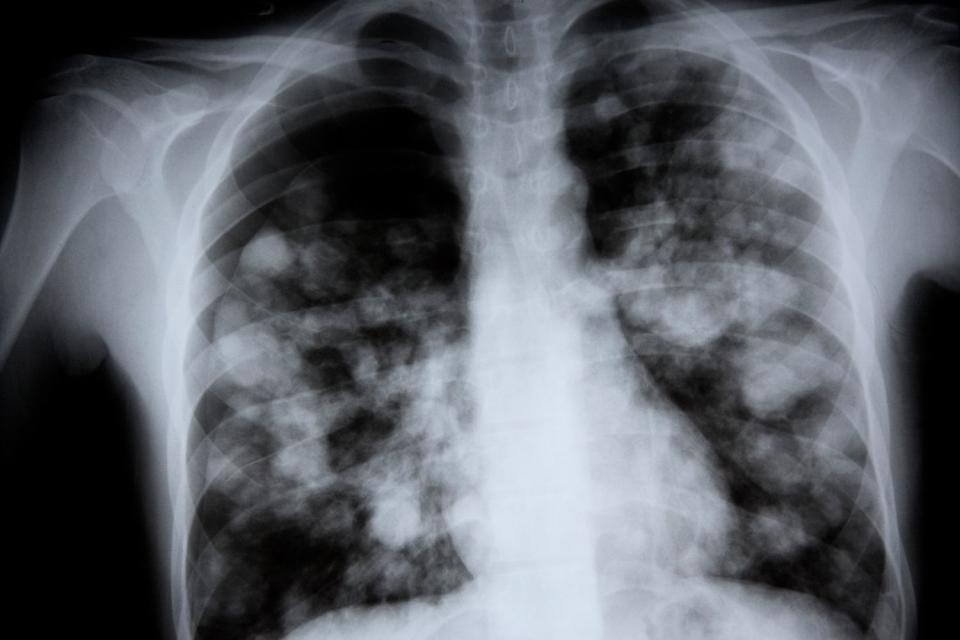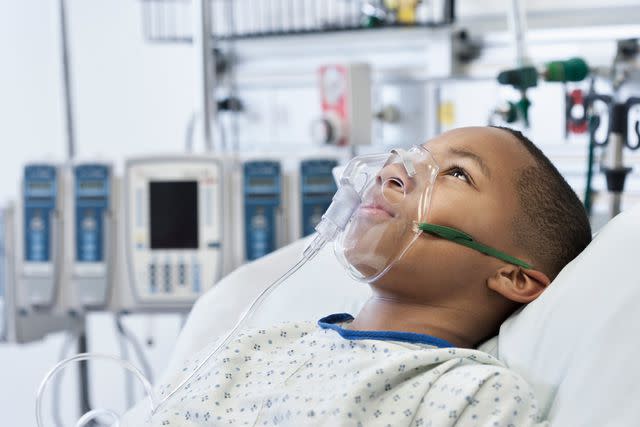What Exactly Is 'White Lung Pneumonia' — and Should You Be Worried?
The trending term is just a new name for an existing illness known as "walking pneumonia," and experts say it's not worth "alarm bells ringing"

Getty
White spots appear on lungs during a chest X-ray.A quick search for “white lung pneumonia” or “white lung syndrome” can send you down a rabbit hole of alarming reports describing a new respiratory disease affecting children.
Indeed, cases of pediatric pneumonia are on the rise in China, prompting the World Health Organization to officially request information on the cases on November 22. And stateside, Ohio’s Warren County issued an official alert on November 29 after an “extremely high number of pediatric pneumonia cases” — 142 — were reported.
But it’s not an emerging pandemic.
It’s actually pneumonia caused by a bacteria called Mycoplasma pneumoniae. And "it’s nothing new or nothing unique," Dr. James Schneider, the Chief of Critical Care Medicine at Cohen Children’s Medical Center, tells PEOPLE. "When you hear the common colloquial term, 'walking pneumonia,' generally, we're speaking about mycoplasma."
Warren County pointed out this fact in its alert, saying, “We do not think this is a novel/new respiratory disease but rather a large uptick in the number of pneumonia cases normally seen at one time.”

Getty
Pediatric pneumonia cases are rising.According to the CDC, “Mycoplasma pneumoniae bacteria commonly cause mild infections of the respiratory system.”
“We know that every three to seven years, Mycoplasma does surge in a natural cycle,” Ian Michelow, MD, professor of pediatrics at the University of Connecticut and head of the pediatric infectious diseases division at Connecticut Children’s, told Health.
Related: The FDA Is Reviewing an at-Home Nasal Vaccine for the 2024-25 Flu Season — All the Details
The CDC is looking into the recent rise in cases — although most doctors seem unconcerned.
"I think COVID heightened all of our anxiety levels," Dr. Molly O’Shea, a pediatrician at Birmingham Pediatrics and Wellness Center told WXYZ-Detroit,
“Really, it's just a name for plain old, boring... pneumonia,” she said.
And as Dr. Schneider tells PEOPLE, "it's nothing new and we have treatments for it. It's something to be aware of, because we look at trends of when infections are occurring so we can better predict what is causing an infection so we can treat it appropriately. But it's nothing that I would start turning any alarm bells ringing,"
The name “white lung pneumonia” comes from the lungs appearing white or having white spots on a chest X-ray.
Never miss a story — sign up for PEOPLE's free daily newsletter to stay up-to-date on the best of what PEOPLE has to offer, from celebrity news to compelling human interest stories.
“We diagnose [pneumonia] by an X-ray of the chest and areas of the lung that are affected look white," Dr. Schneider tells PEOPLE. "They look white because of the inflammation and irritation of the lung that's caused by the infection."
Symptoms are that of a “chest cold,” the CDC explains, and include a sore throat, fatigue, and a worsening cough. Very young children (under the age of 5) may have gastrointestinal symptoms as well that include diarrhea and vomiting.
Although antibiotics can be used to treat a Mycoplasma infection, the CDC says “Most people will recover from an infection caused by Mycoplasma pneumoniae without antibiotics.”
And as Dr. Schneider points out, "We generally refer to a mycoplasma pneumonia infection as walking pneumonia, meaning patients are often not that sick. They have a cough, maybe a little bit of fever and otherwise can go about their day."
However, he points out, "they're contagious just like any other patient who has any other infection in their lungs."
There isn’t a vaccine for this pneumonia strain, but you can avoid getting Mycoplasma — or any other infection — by taking multiple preventative measures
”It's really layers,” Dr. Mandy K. Cohen, MD, MPH, the Director for the CDC, tells PEOPLE. “Washing your hands, wearing a mask, opening up that window [for ventilation]. You know, doing the things that we know can protect ourselves and each other.”
For more People news, make sure to sign up for our newsletter!
Read the original article on People.

